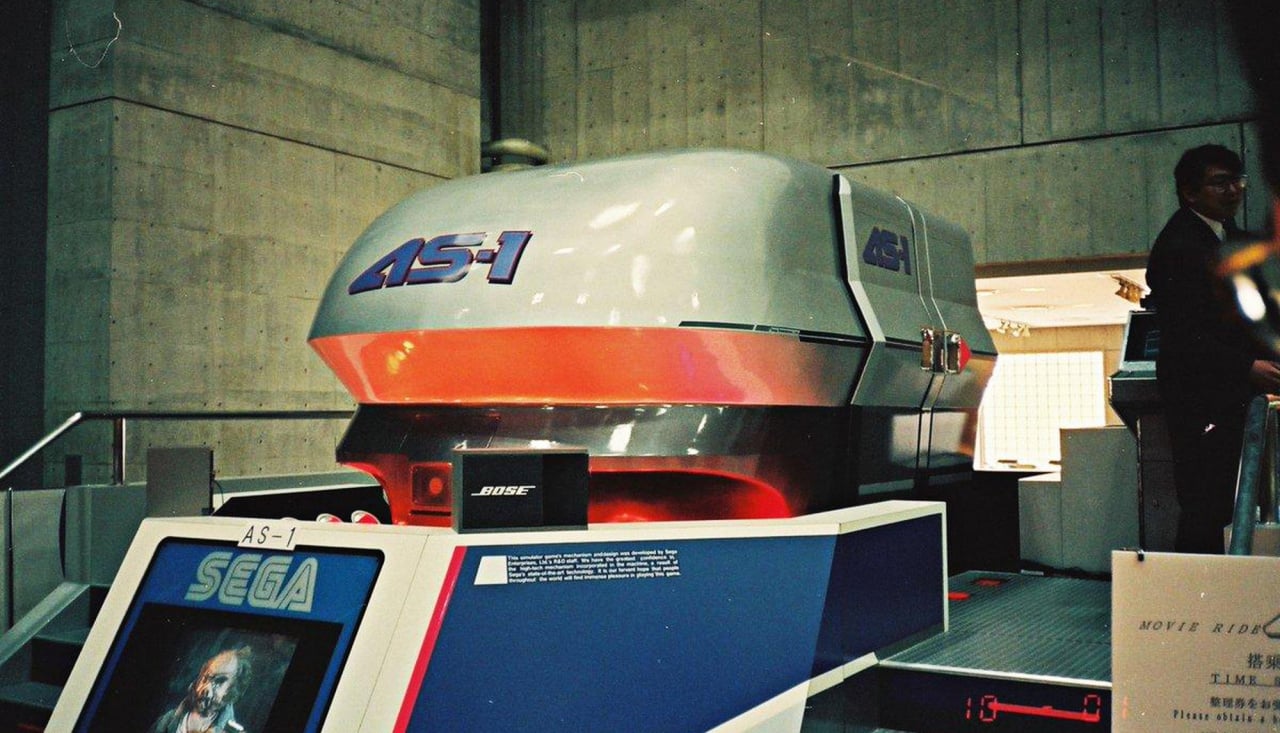A tale that includes Steven Spielberg, Douglas Trumbull and Tetsuya Mizuguchi.
During the mid-’80s, global arcade machine stalwart Sega found itself in an interesting situation. Since merging with Rosen Enterprises in 1965, it had already made countless strident moves in the coin-operated amusement business. The best was yet to come, too – the likes of Atari had beaten it to the punch when it came to including the latest 16-bit processes in their games, but it was Sega’s Hang-On that was about to push games into an era of graphical fidelity and fluidity that the older 8-bit machines couldn’t match, and set it on a trajectory to creating its famous ‘motion simulation’ beasts.
Controlled in deluxe form via the player straddling a huge plastic motorbike, Hang-On started the ‘taikan’ genre of interactive motion simulators, which would go on to include the likes of Space Harrier, OutRun, and After Burner. These legendary titles launched the careers of not only game developers like Yu Suzuki, but also many lesser-known hardware engineers and designers, such as Masaki Matsuno, You Yamaki, and Hiroshi Yagi – all working out of Sega’s ever-expanding corporate headquarters in Haneda, to the extent that their newest offices attained urban legend status as the ‘Hang-On Building’, purportedly built off the game’s profits. While this doesn’t quite match up with the development and construction timelines, it would doubtless go on to make the company the new undisputed king of the arcades at that point in time.
Read the full article on timeextension.com
A tale that includes Steven Spielberg, Douglas Trumbull and Tetsuya Mizuguchi.
During the mid-’80s, global arcade machine stalwart Sega found itself in an interesting situation. Since merging with Rosen Enterprises in 1965, it had already made countless strident moves in the coin-operated amusement business. The best was yet to come, too – the likes of Atari had beaten it to the punch when it came to including the latest 16-bit processes in their games, but it was Sega’s Hang-On that was about to push games into an era of graphical fidelity and fluidity that the older 8-bit machines couldn’t match, and set it on a trajectory to creating its famous ‘motion simulation’ beasts.
Controlled in deluxe form via the player straddling a huge plastic motorbike, Hang-On started the ‘taikan’ genre of interactive motion simulators, which would go on to include the likes of Space Harrier, OutRun, and After Burner. These legendary titles launched the careers of not only game developers like Yu Suzuki, but also many lesser-known hardware engineers and designers, such as Masaki Matsuno, You Yamaki, and Hiroshi Yagi – all working out of Sega’s ever-expanding corporate headquarters in Haneda, to the extent that their newest offices attained urban legend status as the ‘Hang-On Building’, purportedly built off the game’s profits. While this doesn’t quite match up with the development and construction timelines, it would doubtless go on to make the company the new undisputed king of the arcades at that point in time.
Read the full article on timeextension.com










